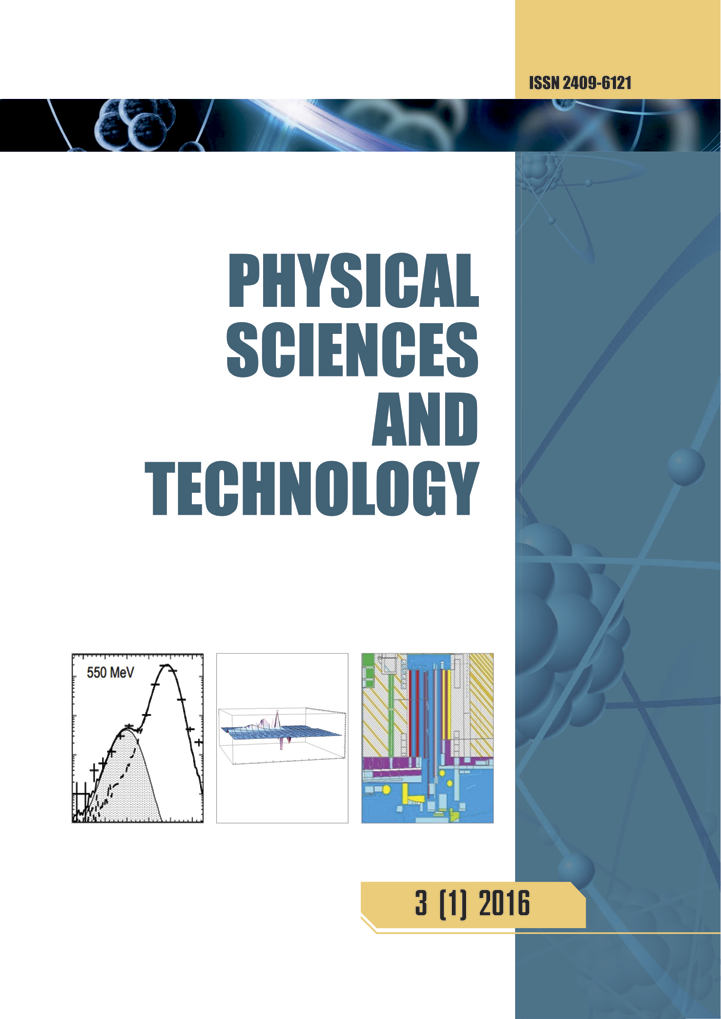Simulation of mechanical strain of metallic electron-irradiated polyimide films
DOI:
https://doi.org/10.26577/phst-2017-2-139Abstract
The impact of silver metallization and electron irradiation on the physical and mechanical properties of
polyimide films has been studied. The metal that impregnated the structure of the polyimide substrate was
1–5 μm. The surface coatings contained 80–97% of the relative silver mirror in the visible and infrared
regions. Irradiation was performed at the ELU-6 linear accelerator with an average beam electron energy
of 2 MeV, an integral current of up to 1000 μA, a pulse repetition rate of 200 Hz, and a pulse duration of
5 μs. The absorbed dose in the samples was 10, 20, 30, and 40 MGy. The samples were deformed at room
temperature under uniaxial tension on an Instron 5982 universal testing system. A substantial growth of mechanical
characteristics resulting from the film metallization, as compared to the pure film, was observed.
The growth of the ultimate strength by Δσ = 105 MPa and the plasticity by Δε = 75% is connected with the
characteristics of the change of structure of the metallized films and the chemical etching conditions. The
electron irradiation of the metallized polyimide film worsens its elastic and strength characteristics due to
the formation of new phases in the form of silver oxide in the coating. The concentration of these phases
increased with increasing dose, which was also the result of the violation of the ordered material structure,
namely, the rupture of polyimide macromolecule bonds and the formation of new phases of silver in the
coating. A mathematical model agrees with the experimental data.




